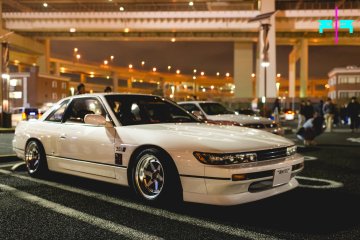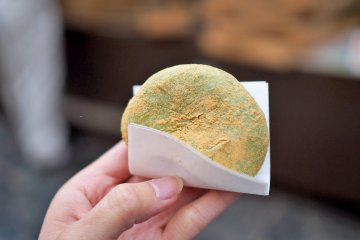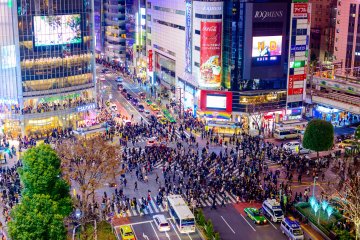Mention 'Japan' and alongside sushi, geisha in kimono and polite citizens that may come to mind, Japan’s iconic trains are likely also high up the list.
After all, Japan’s railway system needs little introduction, which is renowned globally for its impeccable punctuality, reliability and safety record. The Japanese take great pride in their rail network, with an extensive network of lines—with many running the high-speed bullet train—covering the entire country, as well as uniquely designed, regional trains operating along them.
With an extensive rail system providing great coverage across the country, in combination with numerous rail passes available to foreign visitors, taking the train in Japan is the logical choice and a great experience for most foreign visitors to this country. When it comes to speed and simplicity, the Japanese bullet train beats flying in many cases, with many routes providing glimpses of the beautiful Japanese countryside too. Tourists are also in luck with the lucrative JR Pass available exclusively to them – which provides unbeatable value for 7-, 14- or 21 days' worth of travel on Japanese trains – including express bullet train services.

Alongside the nationwide pass, a number of regional variants at lower rates also exist, that can bring you around multiple regions:
- Hokkaido: a winter wonderland and seafood heaven.
- Tohoku: a region of rich history with samurai residences and castles
- Kanto: where the Tokyo metropolis is located
- Kansai: home to Kyoto and Osaka
- Chubu: with its world-famous thatched roof Gassho villages and Edo towns
- Chugoku: divided into Sanin and Sanyo where each region has its distinct charms
- Shikoku: known for its 88-temple Buddhist pilgrimage
- Kyushu: associated with subtropical weather and volcanoes
Hokkaido
Be fascinated by the beautiful nature of Hokkaido
Hokkaido, as the second largest island of Japan, coupled with its harsh coldness, has much to explore. It’s famous among tourists and locals alike for its winter beauty and sports, seafood and ramen. Come spring, delightful flower fields attract throngs of visitors and in summer, Hokkaido is increasingly popular with those who seek its vast nature that’s teeming with life. Apart from its famed cuisine, parks and beautiful natural landscapes, Hokkaido is also steeped in history as the home of the indigenous Ainu people.
As Hokkaido is a very large prefecture—it constitutes 20% of Japan’s overall land—travelling by train to cover major distances and then driving to specific attractions is ideal. Getting a train pass would make traveling much more convenient and economical.
Hokkaido Railway Company (JR Hokkaido)
The Hokkaido Railway Company has an extensive train system that covers most of Hokkaido.
Of the many passes available, the Hokkaido Rail Pass is especially useful as it covers the island substantially, allowing tourists to tick major attractions such as Hakodate City, Otaru Canal, Asahiyama Zoo and Yunokawa Hot Spring off their lists. Visitors arriving by plane at New Chitose Airport can connect via train to central Sapporo in just 40 minutes. The Hokkaido Rail Pass not only makes travelling convenient, it also provides incredible value by covering great distances (JR usually calculates fares based on distance covered).
The Hokkaido Rail Pass is available in 3 options:
- 5-day (Adult: ¥20,000 ; Child: ¥10,000)
- 7-day (Adult: ¥26,000 ; Child: ¥13,000)
- 10-day (Adult: ¥32,000 ; Child: ¥16,000).
Tohoku
Enjoy the delights of Tohoku at your own pace

Situated in the north of Honshu, Japan’s biggest island, Tohoku is a region known for its cold winters with heavy snow, onsens, samurai history, festivals and scenic countryside, mountains and lakes. The rustic beauty of the region makes it great for viewing the autumn colors.
East Japan Railway Company (JR East)
JR East / East Japan Railway Company has an extensive train system that covers the vast Tohoku region.
Tourists planning to visit sites around Tohoku should consider getting the JR East Pass (Tohoku area) which includes the shinkansen on top of the local, limited express and express trains, making the pass ideal for covering the great distance between the Tokyo Metropolitan Area from the south of Tohoku all the way north to Aomori. Use the pass to get from Narita Airport in Chiba or Haneda Airport in Tokyo to popular attractions like Aomori, Nikko, Sendai and Akita!
The JR East (Tohoku area) Pass is available as a 5-day pass (Adult: ¥30,000; Child: ¥15,000).
Kanto
An extraordinary escape

While Japan’s contemporary capital, Tokyo, and bustling cities, Yokohama and Chiba are great fun to visit, the Kanto area has much more to offer. The region also offers natural beauty like Hakone, and attractions like the Great Buddha in Kamakura, onsen towns in Gunma and Kairakuen in Ibaraki with its 3,000 cherry trees that bloom each spring.
JR East
The JR Tokyo Wide Pass is a decent option for those intending to get outside Tokyo and explore the surrounding region. It allows great access to many places within Tokyo and also brings you far beyond to spots like the famed Nikko National Park, the GALA Yuzawa snow resort town, or the historic and scenic Izu. As a great benefit, the pass allows ticket holders to travel by shinkansen, thus saving precious traveling time.
The JR Tokyo Wide Pass is available as a 3-day pass (Adult: ¥15,000; Child: ¥7,500).
Chubu
Scenery that will boost your enjoyment of life

The Chubu region located in the center of Honshu stretches from the north to south of the island with coastlines along the Sea of Japan and the Pacific Ocean. Over here, there is plenty to see and do from the bustling metropolis to the calm and serene mountains and it’s also the ideal place to experience a slice of Japan from the past. The vast area is very diverse and consists of smaller regions within that are known as the Hokuriku region to the north, the Tokai region to the south, Chukyo which is Japan’s third economical powerhouse and Koshinetsu which is known as the “roof of Japan” because of its rough mountainous terrain.
JR Central
The Central Japan Railway Company manages the Tokaido Shinkansen, which links Japan from Tokyo in the east to Osaka in the West, passing through major cities like Kyoto, Nara and Nagoya on the way and also services many travel destinations in the Chubu region such as Kanazawa, Takayama and Hakone. For tourists who are planning a trip with extensive travel within Chubu, JR Central provides multiple travel passes that are catered to different areas and interests within this region.
To experience the best of Chubu, opt for JR Central's Takayama-Hokuriku Area Tourist Pass.
The Hokuriku region is great for those who are seeking a flavor of Japan from bygone eras with Takayama city, the historic Edo district lined with wooden buildings, and renowned World Heritage Sites, like Shirakawa-go and Gokayama (with their Gassho-era thatched cottages), just waiting to be discovered. Further north, you'll also find Kanazawa, which is known as “Little Kyoto” with its traditional neighbourhoods and crafts, geisha, and beautiful garden, Kenrokuen. The region also boasts of well-known onsen towns, like Kaga Onsen and Awara Onsen.
The 5-day Takayama-Hokuriku Area Tourist Pass (Adult: ¥19,800; Child: ¥9,900) allows travel within the Hokuriku region and access to Nagoya, Gero Onsen, Osaka City area, Kyoto and Kansai Airport. It also allows travel on the Hokuriku Shinkansen between Kanazawa and Toyama and unlimited bus rides to the Shirakawa-go and Gokayama villages!
Kinki
The enduring splendor of beautiful scenery remains despite changing times and trends

Kinki, also known as Kansai, is one of the most popular tourism regions in Japan. With major cities like Osaka, Kyoto, Nara and Kobe contributing to the abundance of regional cuisine, and the rich culture and history in the area, it’s easy to understand why Kinki is popular with the masses. Its popularity is nothing new as it has always been well-loved from the olden times back when Kyoto was Japan’s capital to the times when Osaka developed as a merchant city and even till present day. Today, Kinki is the choice region to experience Japan’s culture, traditions and scenery such as Himeji Castle, the Gion district, the Golden Pavilion, Fushimi Inari Shrine, Nara Park, Dotonbori, Universal Studios, and Arashiyama Park. If your idea of a perfect holiday destination is the pinnacle of civilization set against nature, look no further than Kinki.
JR West
The West Japan Railway covers Kansai extensively and also links to neighbouring places like Hiroshima, Okayama, Yamaguchi and Hokuriku, providing convenient access to these places should travelers want to visit them from Kansai.
If you wish to focus on exploring Kinki, or Kansai, the JR West Kansai Area Pass would be the best. Use this pass to explore Kinki in-depth from Kyoto to Osaka, Nara, Himeji and Kobe.
The JR West Kansai Area Pass is available as a 1-day (Adult: ¥2,800; Child: ¥1,400), 2-day (Adult: ¥4,800 ; Child: ¥2,400), 3-day (Adult: ¥5,800; Child: ¥2,900) or 4-day (Adult: ¥7,000; Child: ¥3,500) pass.
Chugoku
A train journey that connects the past with present

Chugoku is a region that’s lightly frequented by travelers, resulting in an authentic quiet charm that tourist hotspots may lack. Divided into two sub-regions by a mountain chain that passes through the area, to the north of the mountains, along the Sea of Japan lies Sanin while Sanyo is to the south of the mountains and faces the Seto Inland Sea. Sanin includes prefectures like Shimane, Tottori and the northern part of Yamaguchi and is known for Izumo Taisha Shrine, Matsue Castle, sand dunes and museum. Sanyo includes the rest of Yamaguchi, Hiroshima and Okayama with attractions like the Akiyoshido Cave, Kintai Bridge, Rurikoji Temple, the WWII memorials, Miyajima for its giant Torii gate, Korakuen and Okayama Castle. For those interested in the less trodden paths, consider Chugoku for your next trip.
JR West
As with Kansai, the West Japan Railway services areas in the western region of Japan. For visitors to the Chugoku region, the JR West Sanyo-San’in Area Pass covers many attractions in Sanyo and Sanin, connects to 6 airports including the Kansai International Airport, allows access to Shinkansen (including the popular Hello Kitty Shinkansen), Osaka, Kyoto and even brings you as far as Tsuruga City in Fukui. The pass is available as a 7-day pass (Adult: ¥23,000 ; Child: ¥11,500).
Shikoku
A train journey to experience the beautiful seasons year-round in Japan

The smallest and least populated of Japan’s main islands, Shikoku is renowned for its 88-temple Buddhist pilgrimage route, Matsuyama Castle, Dogo Onsen and pristine nature. Be enthralled by the island’s nature offerings like the scenic Oboke Gorge where you can cruise down the blue Yoshino River that’s flanked by steeply rising rocky walls on the sides, the alienesque Shikoku Karst which is ranked as a top three karst spot within Japan with eroded limestone dotting the hill and plateau or the Pacific-facing Katsurahama Beach with the statue and enthralling tales of Sakamoto Ryoma. The adventurous can consider heading to the Oku-Iya Niju Kazurabashi for its unusual vine bridges and another bridge where you can pull yourself across in a wooden cart, or to camp there with family and friends for a day or two.
Shikoku Railway Company
The Shikoku Railway Company, commonly known as JR Shikoku, operates rather extensively in the Shikoku region with other railway companies providing access to the remaining areas.
If you are planning extensive travel around Shikoku, the All Shikoku Rail Pass allows travel on the JR Shikoku line, and many others, making travel on the pass convenient and worth your money. Furthermore, for those interested in visiting Shodoshima, the second largest island of the Seto Inland Sea island chain, the All Shikoku Rail Pass allows passage on the Shodoshima Ferry between Takamatsu and Tonosho and the Shodoshima Olive Bus line.
The pass also entitles holders to discounts on many other travel options around the region. Lastly, it even offers holders a complimentary ride on the Iyotetsu Takashimaya Ferris wheel, allowing them an eye-level view of Matsuyama Castle, hence making the pass a really attractive deal.
The All Shikoku Rail Pass is available in 3-day (Adult: ¥12,000; Child: ¥6,000), 4-day (Adult: ¥15,000 ; Child: ¥7,500), 5-day (Adult: ¥17,000; Child: ¥8,500) and 7-day (Adult: ¥20,000; Child: ¥10,000) options.
Kyushu
An enduring sightseeing destination since the past

Kyushu, home to the most active volcanoes in Japan, and one of the earliest region in Japan to receive foreigners, has an interesting environment and history that makes it great for tourism. For the nature-inclined tourists, visit the ethereal Yakushima Island with its ancient cedars, the Takachiho Gorge with black volcanic cliffs flanking the blue water and Mount Aso National Park where the scenic ropeway affords a view of the world’s largest caldera. For the history buffs, the Nagasaki monuments, museums and memorials as well as the eerie and abandoned Hashima Island aren’t to be missed. For the cultural aficionados, the magnificent Kumamoto Castle, Yutoku Inari Shrine with a passage of torii gates, Usa Jingu and Saga pottery would be great experiences. And in general, the vibrant Fukuoka City with the mega-mall City Canal Hakata, picturesque hot spring Yufuin town, the Dutch-themed Huis ten Bosch village, Hells of Beppu, Kyushu National Museum and the African Safari serve well to entertain.
JR Kyushu
The JR Kyushu Company services the region extensively. To explore Kyushu, the JR All Kyushu Pass is recommended. The pass allows travel on local trains and limited express trains throughout Kyushu and also access to the shinkansen between Hakata and Kagoshima-chuo. A 3-day pass (Adult: ¥20,000 ; Child: ¥10,000) or 5-day pass (Adult: ¥22,500 ; Child: ¥11,250), and 7-day pass (Adult: ¥25,000 ; Child: ¥12,500) is available.
As a general rule of thumb, whenever possible, purchase your JR passes overseas before you set foot in Japan as passes bought abroad are priced cheaper than those sold in Japan. In this article, the listed prices of the passes are what they would cost if they were bought abroad. Do note that in order to be eligible to purchase and use a JR Pass, you should be in possession of a non-Japanese passport and be residing outside Japan and visiting on a short term visa. This applies to all passes except the JR Tokyo Wide Pass which residents of Japan holding non-Japanese passports can also use.
Happy exploring Japan on your JR Pass!
For more information on Japan’s railroad: https://www.jal.co.jp/arl/en/world/railroad/




























